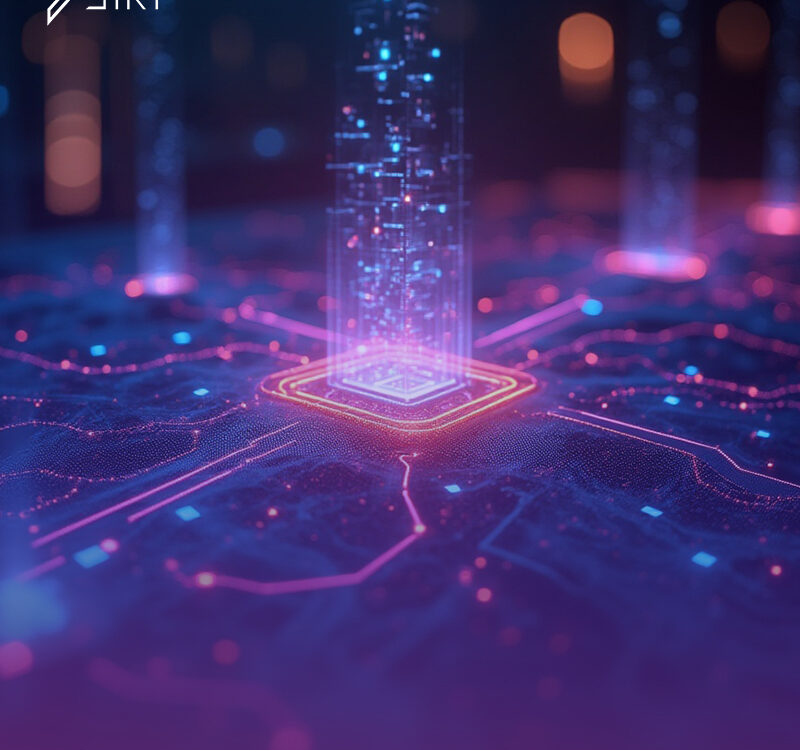
Automation Without Visibility Is Just Risk at Speed
April 11, 2025
Why Alert Fatigue Isn’t Just a Workflow Problem
May 9, 2025
Automation Without Visibility Is Just Risk at Speed
April 11, 2025
Why Alert Fatigue Isn’t Just a Workflow Problem
May 9, 2025You’re investing in tools. You’ve got detection rules, automation scripts, response playbooks. But incidents are still dragging on, alerts are still overwhelming, and your analysts are burning out.
Here’s what’s actually slowing you down: hidden bottlenecks in your incident lifecycle that don’t show up in dashboards but impact every step from triage to remediation.
Let’s break down the three most overlooked issues, why they matter, and how to fix them with clarity, consistency, and control.
1. Triage Without Context Is Just Noise
The problem isn’t too many alerts. It’s too little context.
Most security teams receive thousands of alerts per day. The majority of those are low-risk, repetitive, or outright false positives. Instead of filtering them intelligently, SOCs rely on static rules and severity scores from tools like SIEMs or IDS.
That’s not triage. That’s sorting by label.
Why this bottleneck is dangerous:
Analysts waste hours investigating meaningless alerts.
Without context, there’s no way to know whether an alert targeting an old printer is more important than one hitting a domain controller.
Threats hide in plain sight.
If an alert is tagged as “low severity” but is part of a larger chain like credential access or lateral movement, it might get dismissed. That’s exactly how breaches evolve undetected.
Fatigue sets in quickly.
Teams get used to ignoring alerts. And when a real threat shows up, it’s too late.
How to fix it:
Enrich every alert with asset context
Add data like asset criticality, ownership, business function, exposure level, and past incidents. Alerts on internet-facing or mission-critical systems should always take priority.
Correlate alerts with user behavior and vulnerabilities
If a user account shows anomalies or the target system has known vulnerabilities, that alert needs extra scrutiny, even if severity is low.
Use AI and S3 to auto-prioritize
Platforms that apply behavioral analytics and machine learning can weigh context, history, and risk to automatically surface high-priority alerts.
Implement risk-based scoring, not raw severity
Risk is a function of likelihood multiplied by impact. A minor alert on a high-value asset is riskier than a major one on a sandboxed endpoint.
2. Fragmented Investigation Workflows Burn Time
You shouldn’t need five tabs open just to understand what happened.
Most investigations look like this:
One console for logs. Another for EDR telemetry. A third for threat intelligence. A fourth for ticketing. Maybe Slack to ask around. That fragmentation silently kills speed, accuracy, and documentation.
Why this bottleneck is dangerous:
Analysts spend more time collecting data than analyzing it.
Jumping between tools means constant context switching, delays, and missed connections.
Critical evidence gets overlooked.
If related events or indicators aren’t automatically linked, you risk chasing the wrong lead or closing the case prematurely.
No centralized timeline or case memory.
Without a unified view, it’s hard to reconstruct what happened or share findings with others, especially across shifts.
How to fix it:
Centralize investigations in a unified platform
One interface should show enriched alerts, user context, asset history, related IOCs, and threat intelligence, all in one place.
Use AI agents to assist analysts
AI can instantly summarize incident timelines, flag suspicious patterns, and correlate alerts with vulnerabilities or past incidents.
Auto-document every action and decision
Every search query, evidence tag, and decision should be tracked for internal audits, team learning, and compliance.
Enable collaborative investigations
Multiple analysts should be able to work together on an investigation without duplicating effort or losing context.
Real value
When all investigation data is visible, connected, and logged in one place, your Mean Time to Investigate drops and analyst confidence rises.
3. Manual Remediation Doesn’t Scale
You’re not fast if you still need to copy-paste from the playbook.
Even in advanced SOCs, remediation is often manual. Blocking IPs, disabling accounts, isolating endpoints. These are repeatable actions that should be automated or at least guided. But teams hesitate to automate without full trust in context.
Why this bottleneck is dangerous:
Response delays let attackers move laterally.
If your average response takes hours, attackers have plenty of time to escalate privileges or exfiltrate data.
Inconsistent fixes create recurring incidents.
When remediation varies case by case, similar threats aren’t handled the same way and vulnerabilities remain open.
Overburdened analysts can’t focus on critical work.
Manual steps like pushing patches or killing processes drain skilled resources on tasks that a system could recommend or safely automate.
How to fix it:
Use AI to recommend remediation actions
AI agents can assess the threat type, target system, and environment to generate a contextual, recommended action plan with clear reasoning.
Automate low-risk responses with pre-approval
Common actions like isolating infected endpoints or disabling compromised accounts should be automated with appropriate guardrails in place.
Standardize remediation workflows across incident types
Build and test response playbooks for recurring threats like phishing, malware, and privilege abuse, and apply them consistently.
Monitor and improve over time
Track and evaluate every remediation effort. Did it work? Was it overly aggressive? Use outcomes to refine your response playbooks continuously.
Real value
Automating intelligently doesn’t replace analysts. It elevates them. They stop doing work machines can handle and instead focus on strategy, threat hunting, and continuous improvement.
These bottlenecks don’t just slow you down. They expose you
Each one of these bottlenecks stretches your incident lifecycle:
Slow triage leads to delayed detection.
Fragmented investigations prolong decision-making.
Manual remediation allows threats to persist.
And it’s not just about time. It’s about risk exposure. Every minute you delay, the threat evolves and the damage deepens.
3 Steps to Eliminate These Bottlenecks
Here’s how to turn these insights into measurable improvements:
Step 1: Map Your Lifecycle
Document every stage of your incident lifecycle: Detection, Triage, Investigation, Response, Recovery.
Measure how long each stage takes today.
Identify where friction, duplication, or confusion slows things down.
Step 2: Automate With Visibility
Never automate in a black box. Ensure every action, whether human or machine-triggered, is visible, explainable, and auditable.
Enrich alerts and actions with the right context so that automation is informed, not reckless.
Step 3: Unify and Simplify
Reduce the number of tools needed to investigate and respond.
Choose platforms that integrate triage, investigation, remediation, and reporting. Prioritize solutions that include built-in AI assistance to remove decision bottlenecks.
Final Thought: Tool Fatigue Isn’t the Problem. Friction Is.
You don’t need more technology. You need fewer barriers between detection and resolution.
That starts with eliminating the hidden bottlenecks silently degrading your security posture every day.
Ready to transform your incident lifecycle?
See how SIRP’s AI-driven platform eliminates friction across triage, investigation, and response and helps you recover faster with confidence.




